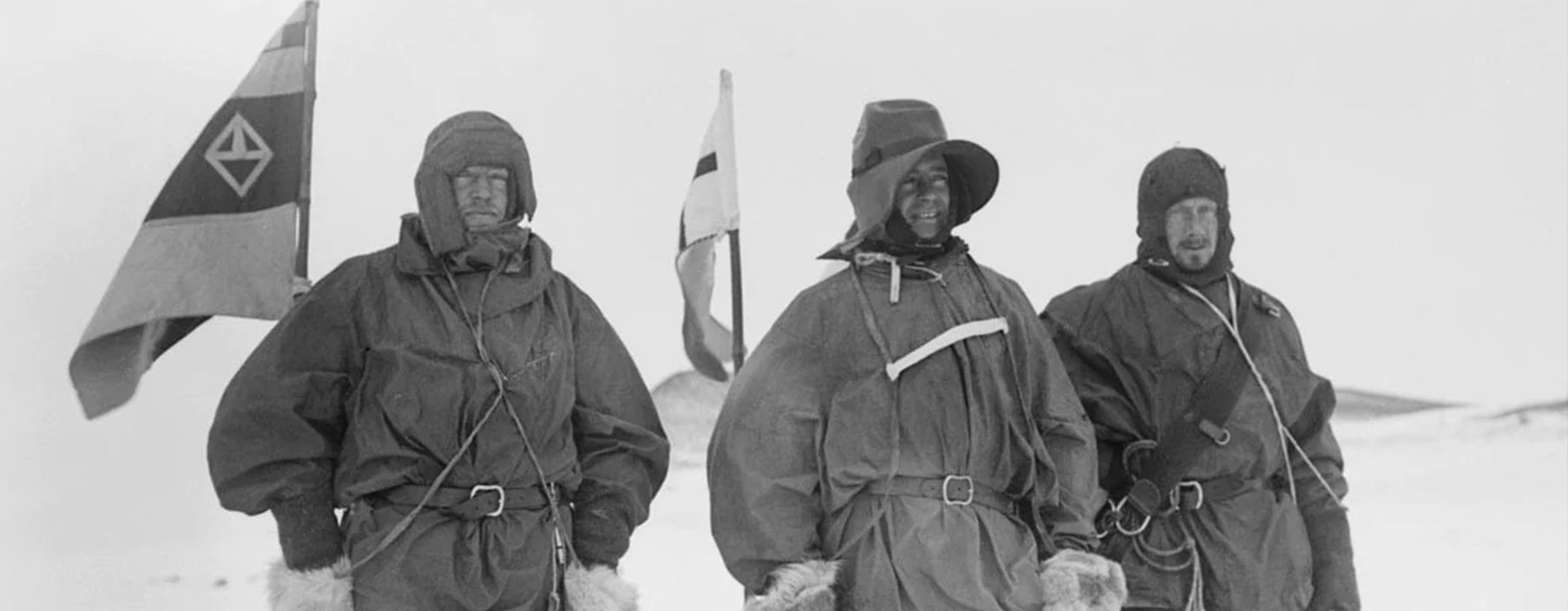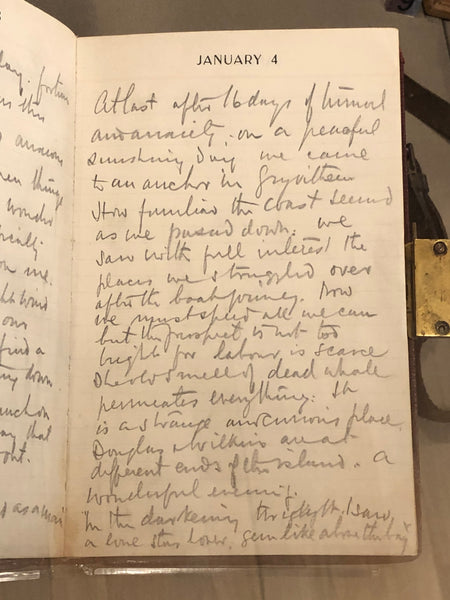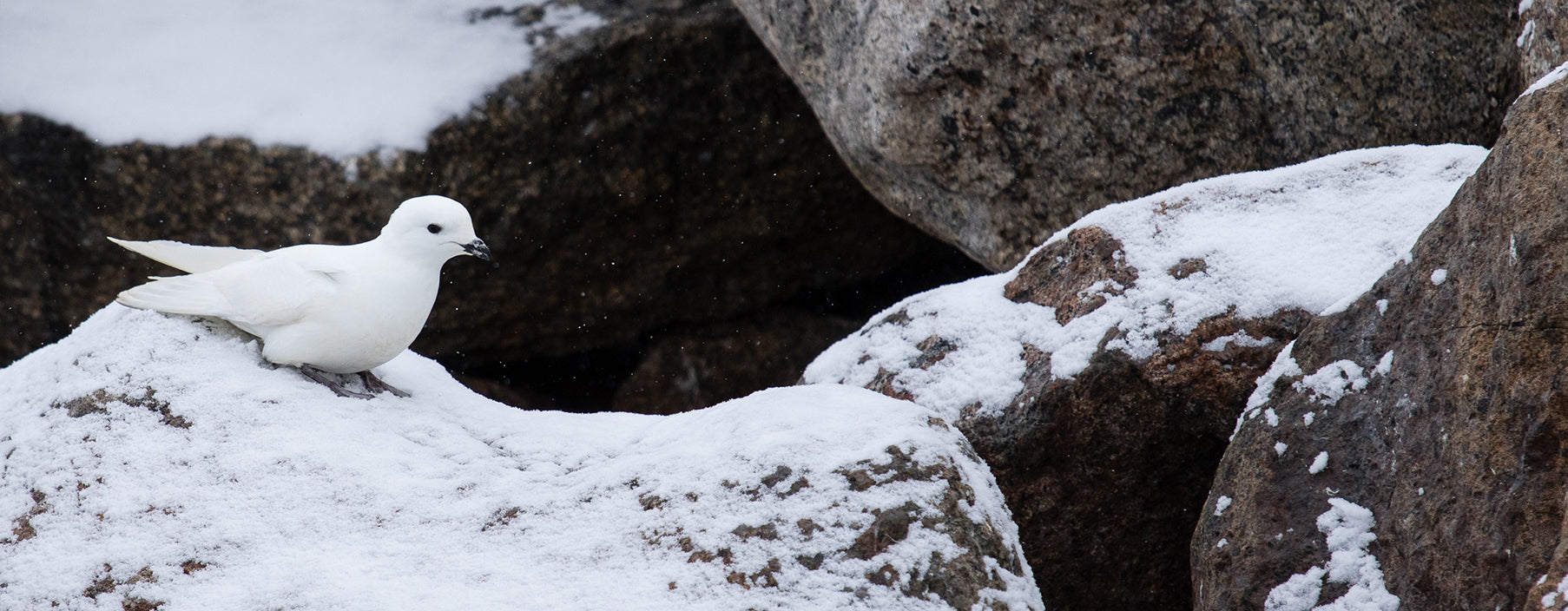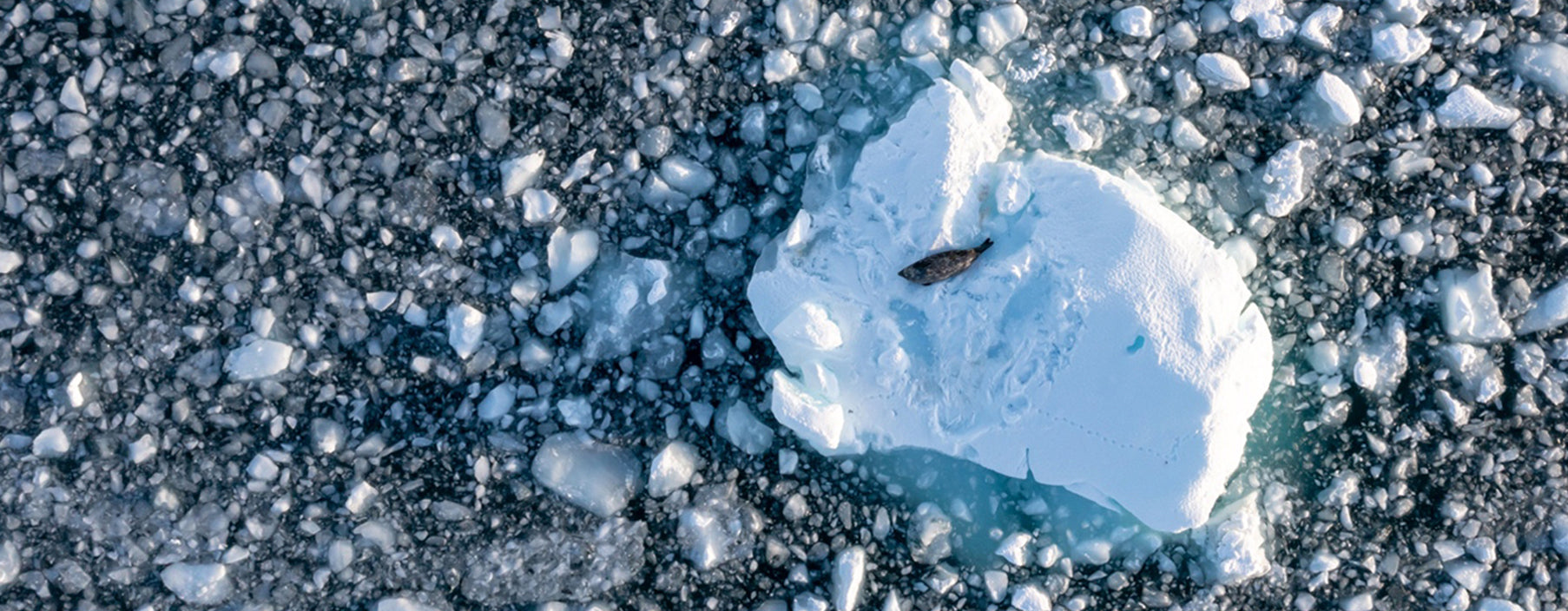
THE SYMBOLISM BEHIND THE SHACKLETON ICONOGRAPHY
Since launching the CHALLENGER range of elite technical apparel in April, we’ve had a terrific level of interest in the products, the future product pipeline and also in the symbol we have selected as the signifying icon for the range. We asked Co-Founder Martin Brooks to explain the symbolism behind the choice of Shackleton’s brand icons.
“Many Shackleton devotees know the origins of the nine-pointed star that leads our brand. It is a graphic representation of the star carved in granite on Sir Ernest’s gravestone. After he was buried by his shipmates in the whaling cemetery just outside Grytviken, South Georgia back in 1922, the grave was marked with a simple wooden cross and hung with wreaths.
Later, in 1928, a headstone made in Edinburgh from Scottish granite was erected on Shackleton’s grave. It was carved by Stewart McGlashen, taken to Barry Docks, Wales, by rail and shipped on Harpon, a cargo ship that sailed regularly to Grytviken. The headstone bearing the star was unveiled at a simple ceremony by the Governor of the Falkland Islands, Sir Arnold Hodson. There is nothing written in the crew’s diaries about the choice of design, but two theories exist.

The first theory is that the icon represents three different parts of the Boss’s life: a star for Shackleton the sailor, a snowflake for the polar adventurer and a compass for the explorer who was ever-drawn to the South Pole. This theory, however, does not account for the lack of 180 degrees south on a nine-pointed compass.
The second theory connects the star directly to Shackleton’s last diary entry on the evening he died on 5th January 1922 “In the darkening twilight I saw a lone star hover, gem-like above the bay.” Some hold that the number nine was an auspicious or lucky number for Sir Ernest, with many of his life’s most important events happening on the ninth year, month, day or hour.


Quest arrives in King Edward Cove Image ©SPRI
The choice of icon for the CHALLENGER range is similarly rooted in Shackleton history.
Visitors to the Scott-Polar Research Institute in Cambridge are able to view the Boss’ original expedition sledging flag. This flag can be seen clearly in photographs from expeditions including the Nimrod expedition in 1909 when Shackleton, Frank Wild, Jameson Boyd Adams and Eric Marshall trekked to within 97 miles of the South Pole, his ‘farthest south’, only turning back for the lack of a few kilos of food. Characteristically, the Boss put the lives of his men ahead of personal glory, writing to his wife Emily ‘I thought you’d prefer a live donkey to a dead lion.’


The sledging flag, used on the most arduous of his challenges contains three uniquely-shaped buckles or shackles, which our namesake took from the Shackleton family crest. When we began the search for a symbol to denote the CHALLENGER range of expedition products, the shackle was the immediate and only choice. We want people who choose these products to feel that the Boss is there in spirit, at their side, willing them on to greatness. Naturally, we are proud of these iconic marks and use them with utmost respect on our journey to honour the Boss and his deeply inspiring legacy."
More reading here.


